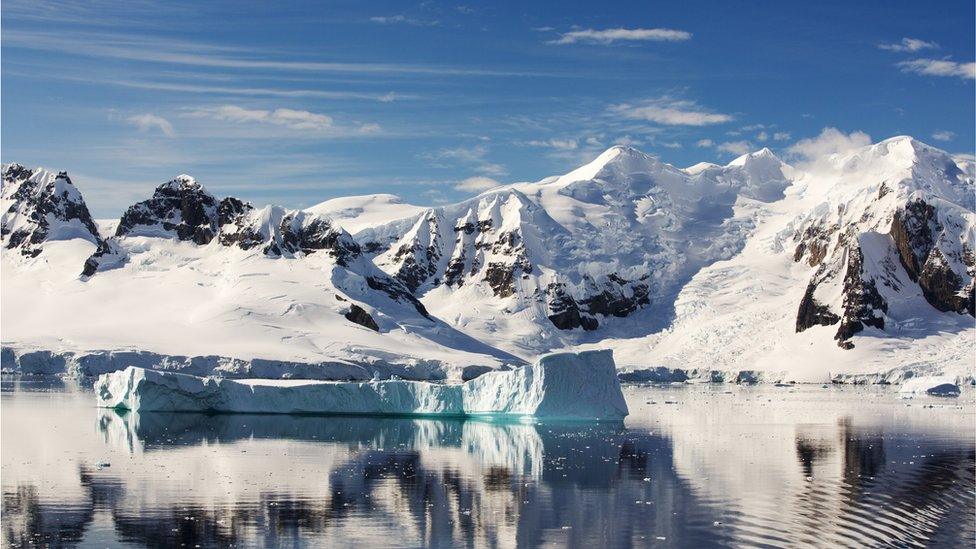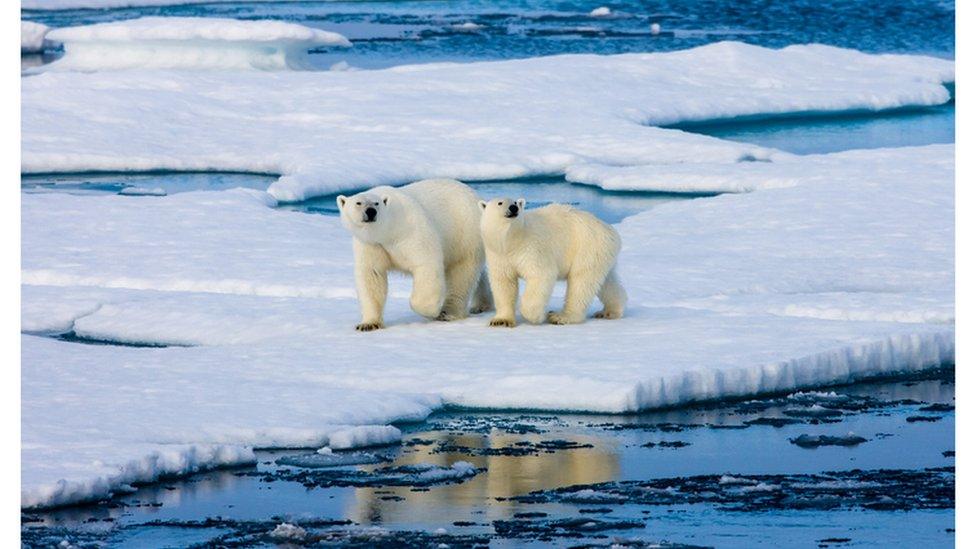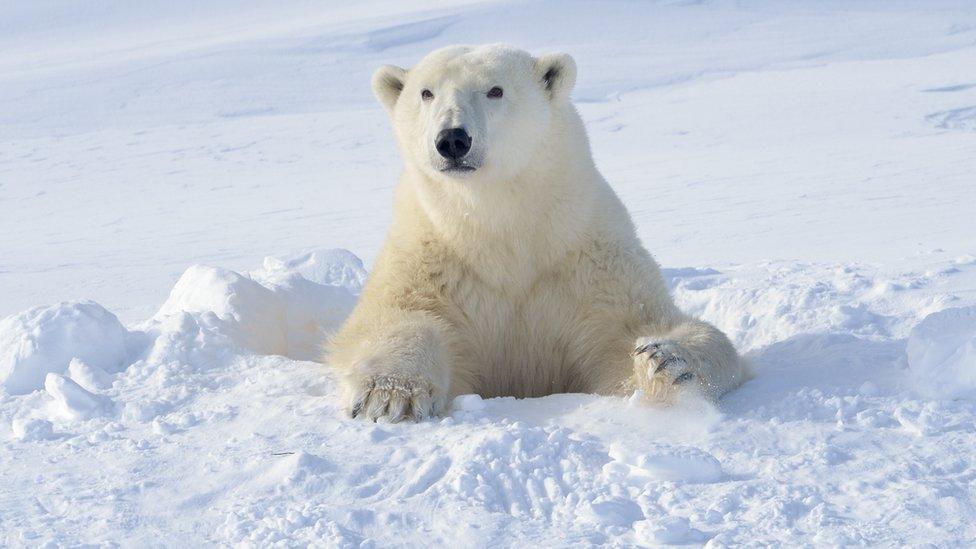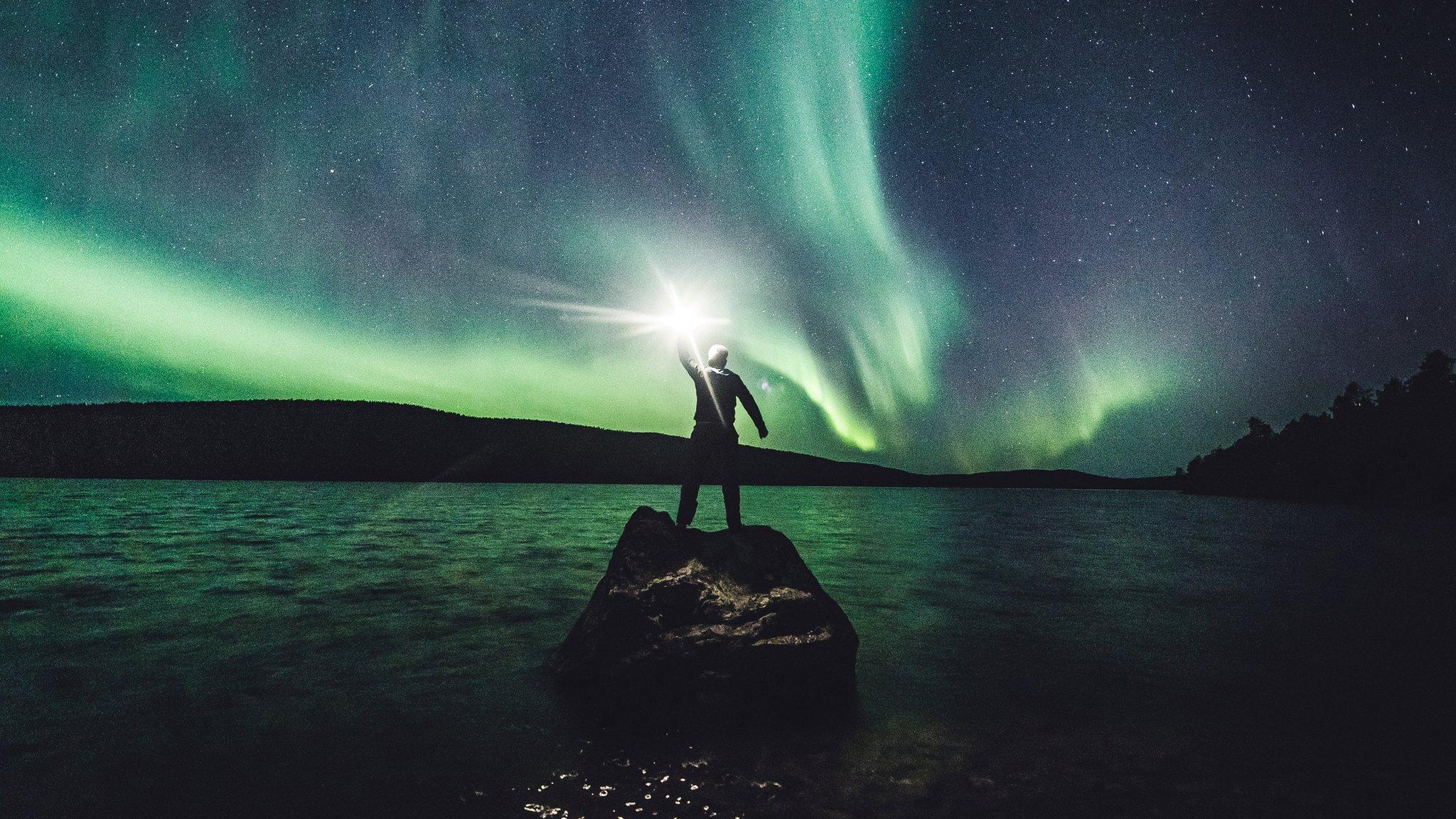North and South Poles experiencing unusually warm weather
- Published
- comments

Temperatures in Antarctica reached record levels at the weekend
Climate scientists are warning that both the Earth's poles are experiencing unusually hot weather at the moment.
Temperatures in parts of Antarctica, which is in the South Pole, reached record levels at the weekend, around 40 degrees Celsius higher than normal.
At the same time, weather stations near the North Pole also showed signs of a heatwave, with some temperatures around 30 degrees above average.
Experts say that it's unusual to see warm weather at both poles at the same time as they are located on opposite sides of the planet and experience going through opposite seasons.
What did scientists find?

Scientists are worried that both North and South poles are showing signs of melting
The Eastern part of Antarctica is usually home to some of the coldest locations on the planet, however at the weekend, the Concordia weather station which is based there, saw temperatures rise to a record -12.2C.
Another Antarctic weather station, the Vostok weather station, also saw record warm temperatures climbing to -17.7C, about 15C higher than normal.
At this time of year, winter is starting in Antarctica and temperatures should be much colder now that summer has finished.
Climate scientist Jonathan Wille said, "And there it is, Concordia broke its all time record temperature by 1.5°C."
"This is when temperatures should be rapidly falling since the summer solstice in December," adding that these high temperatures were "never supposed to happen."
Meanwhile, the Arctic should only now be slowly be coming out from its winter, so the warm temperatures on the North Pole are also worrying scientists as it could have a big impact on sea ice.
Why is sea ice important?

Many animals, such as polar bears, rely on sea ice to hunt for food
Scientists have warned that these unexpected events could be a sign of a faster climate breakdown.
Much of the Antarctic ice covers land, and the warmer temperatures means that more ice melts and its melting also raises sea levels.
Lots of animals also rely on the ice in the Arctic Ocean to hunt for their food, like polar bears.
Seals and walruses also use sea ice for resting and giving birth.
Ice can also have an affect on the climate.
The ice is very bright and reflects the sun's light back into space, meaning that polar regions with sea ice stay cooler.
When there is less sea ice, not as much sunlight is reflected back into space, so temperatures in the polar regions rise.
These warmer temperatures mean more melting, which means less sea ice - and the cycle continues, having a warming affect on the area.
- Published20 July 2020

- Published28 January 2021

- Published2 January 2020

